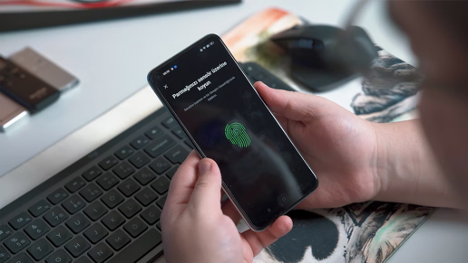Relevance Of Costumer Identity Verification To Your Business
2023.01.04

Introduction
Identity verification sees to it that a process is being carried out by true people and confirms that the individual is true to who they say they are. This stops someone from forging a fraudulent identity, engaging in fraud, and acting without permission on someone else's behalf.
Identity verification may have been implemented in 1414 by King Henry V issuing one of the oldest known "passports" that has existed for thousands of years. However, it is understandable that documents have changed significantly since that day. Individual sheets of paper that were previously common are now essential products that frequently contain digital chips containing all of our vital data.
Identity fraud incidents are increasing as more transactions are done online. The frequency of identity theft cases increased annually by 73% between 2019 through 2020, according to the Federal Trade Commission, and this trend is projected to continue.
Most institutions need to have a preventive security strategy given the prevalence of fraud. Luckily, preventing a catastrophic cyberattack as well as other similar scams is simple by putting in place a robust client identity verification system.
What is Customer Identity Verification?
Client identity verification is the procedure that businesses employ to confirm a person's information and identification, or identity data for short. Institutions that are already successfully implementing this find the process simpler and more efficient. It speeds up identification that their customers are who they say they are, reducing fraudulent activity and other associated scams.
A customer identification system enables managers to figure out whether a client can be a threat to the business and aids institutions in remaining compliant with standards. Institutions that manage a significant bulk of personal information like banks, healthcare institutions, and legal entities are expected to have the most advantage from proper verification. The most popular techniques for the identification of individuals are listed below.
Biometric analysis
Customers are authenticated by a biometric system based on their biological traits. Users benefit from a strong degree of convenience when using fingerprint or face feature analysis since no passwords are required to be kept. Additionally, biometric information is difficult to copy or steal, increasing security.
Multi-factor authentication
Users must supply two or maybe more validation factors when using multi-factor authentication or MFA mechanism to enter a system. For instance, MFA will require your customers to enter a different one-time password (OTP) for each transaction rather than simply allowing them access to the system just by entering their passcodes. Although SMS and email, OTPs are typically the most often used verification methods, MFA may also incorporate smartcards, fingerprints, and identifier apps. Overall, having many protection layers will lessen the chance of a successful hack.
Document verification
The process of validation of documents involves scanning official papers like driver's licenses, banking information, and passports for a variety of features such as holograms, stamps, and watermarks. Additionally, these records contain personal information like an individual's name, birth date, and residence. These facts can be cross-referenced with other sources of information to ensure their accuracy.

Knowledge-based authentication
This kind of validation confirms that the user knows the information they first provided. In this way, clients are often asked to respond to a brief set of privacy questions by organizations that employ it. For example, "What was your first pet's name? or "What's your best friend's name?" are incredibly impossible to access and cannot be responded to unless they are the clients themselves. As such, it is lowering the probability of a breach.
Online verification
This sort of verification employs AI technology, computer vision, biometrics, and human assessment to verify whether a government-issued Identification belongs to the user. To confirm the authenticity of the person who holds the one on the identification card, they are often asked to supply a picture with it.
Primary Benefits
The main advantage of a thorough client identity validation process is that it helps to stop fraudulent activities. It has additional advantages besides increased security, such as:
Improved client experience
Because most businesses use digital workflows, there are fewer requirements for paperwork. Onboarding may be made simpler by the simplicity of use, particularly in proof of identity. Your customers' accessibility to your company's services will be enhanced by reducing obstacles in the application procedure and improving clients' relationships with your business.
Deters fraud in all forms
Having access and identity management technologies prevents fraud, which is the key advantage. This is crucial for businesses in the finance sector because it may stop evil plans like money laundering.
Ensures federal compliance
Client identification can compromise a person's privacy and government rules if it is not properly implemented. For the processing of a person's information, including biometrics and facial recognition, several data privacy legislation demand consent and prior notification. Furthermore, failing to confirm someone's identification can result in illegal transactions, which could result in severe penalties or perhaps even criminal charges.
Rather than taking the information provided as all authentic, it is best to consider adopting a system that collects authenticated photographs or videos from your clients to serve as identification proof.
Improves reputation
Several institutions work to establish a positive reputation. Gaining trust is crucial to retaining customers over the long term. Customers nowadays only do business with respectable companies.
Assuring them that the information they've submitted to your company is going to be kept in utmost confidentiality is the best method to win their confidence. Building a solid identity verification system will therefore give customers the reassurance they require, and equally a clear sign that you're concerned for their safety. In the end, meeting the wants of your customers will make them brand ambassadors for your business, enhancing your standing in your market and industry in the long run.
Transaction monitoring
Verifying the customer's identity improves security and makes it easier to flag questionable transactions. Besides allowing businesses to validate customer data, it also allows them to collect additional information like geolocations and IP addresses. This data can assist relevant parties in gaining a thorough and better understanding of a person's behavior to assess the legitimacy of each transaction.
Conclusion
With the speedy technological advancement, the fraud rate continues to climb. Keep in mind to keep doubly sure that you're doing everything possible to protect your business and your customers against fraud. Your business will have the strongest chance of increasing operational effectiveness and customer happiness by incorporating access control and identity management solutions.

More Articles
Copyright © Fooyoh.com All rights reserved.